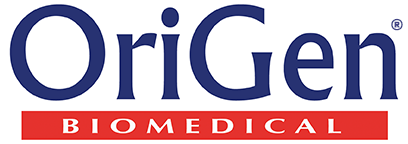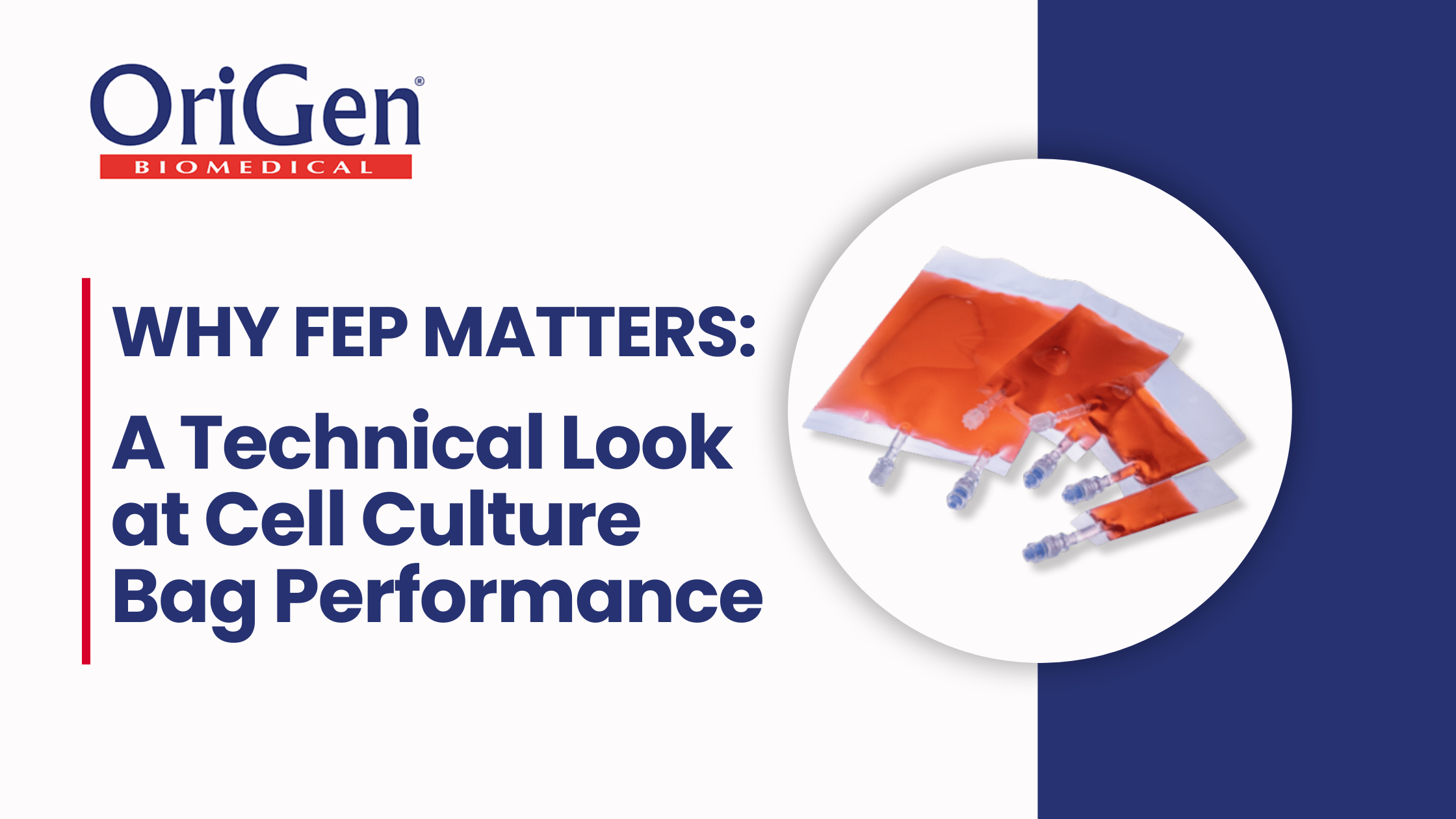Fluorinated ethylene propylene (FEP) is widely recognized for its chemical inertness, transparency, and reliability in sterile, ex vivo applications. In controlled cell processing environments, choosing the right bag material helps support closed-system workflows and meets GMP expectations.
In cell therapy, material selection plays a key role in maintaining process consistency. FEP is a trusted option because it allows gas exchange, minimizes water loss, and remains chemically inert during cell expansion, storage, and cryopreservation. It does all of this without interacting with or altering the final product.
The OriGen Biomedical® PermaLife® Cell Culture Bag is constructed entirely of FEP film. Here’s why that matters.
Intended Use: The OriGen Biomedical PermaLife Bag is intended for use in cell culture and in protecting, storing, and freezing cells and tissues.
1. Gas Permeability: Supporting Cell Metabolism in Closed Systems
Gas exchange is essential for maintaining optimal conditions during cell culture. Your cells require oxygen, carbon dioxide, and nitrogen in controlled balances to support metabolism and expansion. The FEP film used in the OriGen Biomedical’s PermaLife Cell Culture Bags is gas permeable, allowing passive diffusion of these gases across the film surface.
PermaLife bags are also practically impermeable to water. This allows operators to maintain consistent culture volumes without relying on humidified incubators, which can introduce contamination risks. This feature is especially valuable in cleanroom and GMP environments where minimizing environmental variables matters.
Different bag films behave differently in cell culture and cryopreservation workflows. Here’s how FEP stands out:
- EVA: allows some gas transfer but requires humidified conditions to prevent evaporation.
- EVO: used in products like the Evolve Cell Culture Bag, can be suitable for cell culture and tissue storage, but has lower gas permeability than FEP.
- FEP: used in the PermaLife Cell Culture Bag, offers high gas permeability and a low water vapor transmission rate (<7 g/m²/day), which reduces the need for humidified incubation.
2. Chemical Inertness and Biocompatibility
FEP is widely recognized in the scientific community for its chemical inertness. This makes it a strong fit for workflows involving sensitive or regulatory-controlled cell types where material compatibility is essential.
The OriGen Biomedical PermaLife Cell Culture Bag uses an FEP film outline that has been tested for short-term resistance to 100% DMSO over a 24-hour exposure period (WP1411 DMSO Compatibility with Medical Plastics). While all components are rated for exposure to solutions containing up to 80% or less DMSO, this supports compatibility with typical cryoprotectant solutions used in cell therapy workflows.
PermaLife bags have also been validated for use in cryogenic storage when placed inside an OriGen Biomedical O-Wrap® Bag and stored in either liquid or vapor phase nitrogen. Biological testing was conducted in accordance with ISO 10993 guidelines, including evaluations for cytotoxicity, hemocompatibility, and sensitization. Results support the biocompatibility of the materials used in the PermaLife bag for its intended ex vivo use.
3. Sterility and Usability in Closed-System Workflows
Beyond gas permeability and chemistry, practical use matters. FEP supports sterile access, compatibility with tube welding, and real-time inspection, all critical features for GMP environments.
Key features of the PermaLife FEP bag:
- Swabbable needle-free valves (NFVs) for repeated sterile access
- Optical clarity (96% transmission) to visualize cells without opening the bag
- Ability to also gently mix cells within the single-use disposable bag, unlike in rigid flasks, where mixing is more limited or requires manual handling
- PVC tubing is validated for SCD welding compatibility
The result is a closed, observable, and adaptable culture system, particularly useful for:
- Cell expansion workflows
- Cleanroom-based manipulations
- Small to large batch experimental runs
And for added flexibility, OriGen Biomedical PermaLife Cell Culture Bags are available in multiple sizes, with scalable working volumes ranging from 10 mL to 3000 mL. Freeze volumes are validated up to 2000 mL, depending on the configuration.
4. From Culture to Cryopreservation
One major advantage of FEP that many users overlook: it supports both cell culture and freezing.
Using the OriGen Biomedical O-Wrap Bag as an overwrap, the PermaLife Cell Culture Bag can be safely cryopreserved down to –196°C in liquid nitrogen. The O-Wrap Bag provides a protective barrier during direct submersion to help prevent mechanical stress and film cracking.
For vapor phase nitrogen storage, the PermaLife bag does not require an overwrap and has been validated for use under those conditions.
This allows for:
- Seamless transition from culture to freeze without needing to transfer product
- Fewer handling steps
- Fewer vessels to validate in GMP processes
The PermaLife bag has undergone freeze/thaw validation testing in the vapor phase of liquid nitrogen, with no observed defects after five full cycles. This supports its use in GMP cryogenic workflows under validated conditions.
For direct liquid nitrogen submersion, the PermaLife bag must be used with an OriGen Biomedical O-Wrap Bag to maintain product integrity.
Why It Matters for You
If you’re working in cell and gene therapy, every step in your workflow matters. Choosing a material that enables sterile handling, stable cell culture, and cryopreservation can:
- Shorten processing time
- It supports clean documentation and validated handling
- Supports final formulation steps prior to transfer
FEP enables all three.
The OriGen Biomedical PermaLife Cell Culture Bags combine the best of material science, regulatory compliance, and workflow compatibility. Whether you’re just starting out or scaling for clinical use, choosing a platform that aligns with your process early on can help streamline development and support smoother transition for your workflow.




